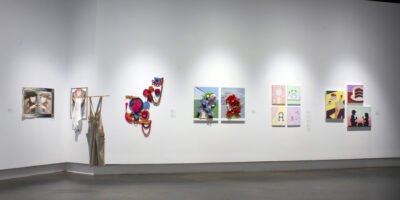Likely the most ancient of the fine arts, music has been around for as long as humans have had mouths to speak and ears to listen. It has changed and developed so much over the course of history that an expert in the field can listen to a piece of music that they have never heard before and give you the time period it was composed in, and perhaps even the composer it sounds most like. This is because, like all forms of art, each piece is heavily influenced by the nature and skills of the artists themselves, and there are many hidden details and flavours hidden in the music that give certain composers a unique and trademark sound.
When it comes to ‘classical’ music, which likely is what comes to mind when ‘music’ and ‘fine art’ are coupled together, it is good to note that this usually refers to a very broad range of music that exceeds the true definition of ‘classical’. Music is categorized by the time period it occurred in, like the simple, kingly melodies of the renaissance times. The composers from this time are not as widely known as others, and their ensembles were often rather small. This time period, however, was important historically, as it introduced many new concepts into music and even saw the beginning of opera.
The baroque time period that followed is fairly easy to distinguish, as its ensembles contain far more strings than any other instrument, with the harpsichord as a very prominent instrument. It often featured many different but simultaneously moving melodies, known as a ‘polyphonic’ structure. Significant composers include Bach (extremely famous for his improvisational piece, ‘Toccata and Fugue’), Handel (his ‘Messiah’ is particularly fantastic), and Vivaldi (most known for ‘The Seasons’).
The true ‘classical’ music came afterward, and was very separate from the baroque style for its simplicity in melodies, where the baroque was fairly dense and complex. The piano became more popular than the harpsichord in this time period, and the woodwinds became more prominent and featured in the music. Haydn and Mozart hail from this time period, and were actually friends; they both had a hand in teaching Beethoven, whose compositions bridged the gap between the classical era and the following romantic era. Some of their finest pieces included Haydn’s Oratorio, ‘The Creation’, Mozart’s opera ‘The Marriage of Figaro’, and Beethoven’s emotional piano solo, ‘Pathetique’.
The romantic movement of music directly coincides with romantic eras in the written and visual arts. Mendelssohn, Chopin, Wagner, Brahms, Holst, Tchaikovsky, Strauss, and Rachmaninoff are all common names for this time period. Most prominent in this time is the far more extensive use of brass instruments, allowing for grand orchestra music, and a greater complexity in terms of having recurring themes and thematic portions. Romantic music can tell a grand story to an attentive listener in this way– in fact, ‘symphonic poems’ rose to fame in this time period, which are pieces composed specifically to evict emotions and tell a story to the audience without any spoken words. Some good places to start exploring the field would be Mendelssohn’s ‘Songs without Words’, or any of Rachmaninoff’s four Piano Concertos.
The twentieth-century brought about greats such as Aaron Copland, and his famous ‘Fanfare for the Common Man’, and then afterwards the modern composers, many of whom gain their fame through their work scoring films, such as James Horner, Hans Zimmer, Alan Silvestri and John Williams. What makes these composers of particular interest is the imitation that they often have to do in order to obtain the impression of period accuracy, but often still retain a little of their distinctive trademarks– just compare John William’s work with Harry Potter to Star Wars, and Saving Private Ryan to Schindler’s List. While the first two are built upon fantasy and fictional worlds, Star Wars was heavily inspired by Holst’s ‘The Planets’ and shared many of its large, brassy qualities and other-worldly melodies, whereas Harry Potter has some of the instrumentation and melodies often heard in early Renaissance music, with the iconic main theme played on the magical and haunting celesta. Saving Private Ryan and Schinder’s List are both films about World War II, its tragedies and the human struggles that result from the terrible nature of war, the two have entirely different tonalities. Saving Private Ryan favours the sorrowful, but courageous brassy sections that give a sense of irrefutable duty and patriotism, while Schindler’s List seeks to tug each heartstring possible for such a powerful film, with its solo violin’s lonely call and minimal focus on the accompanying parts leaving an emotional and empty feeling to the atmosphere.
Despite all of the variance, music has been one of the very few constants throughout history. It has served for generations as entertainment, enlightenment, and inspiration for the people who take the time to listen to and enjoy the many finer points and efforts that the composer took into perfecting the rhythms and melodies just for our ears. Perhaps above all other things is the unique experience that the music gives everyone, if only they take the opportunity to seize the gift.




Leave a Reply